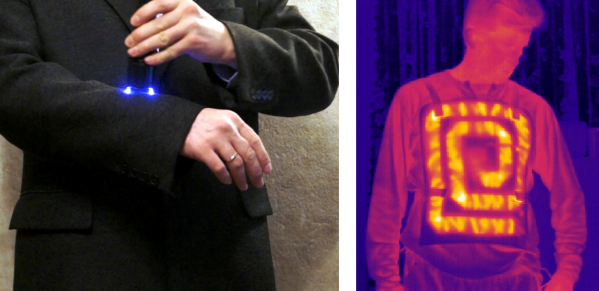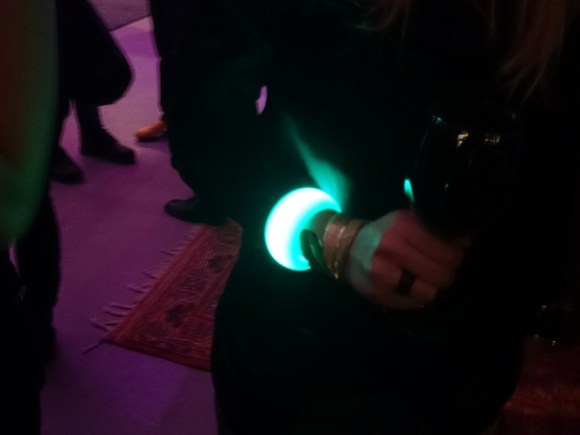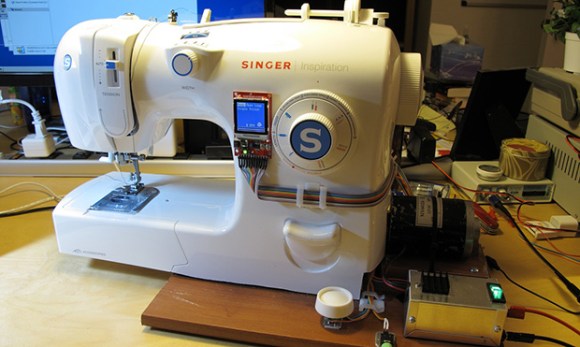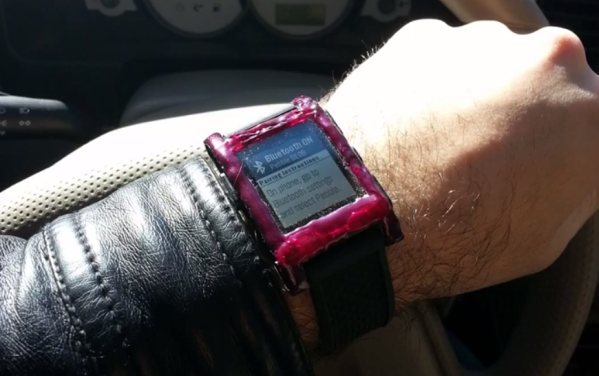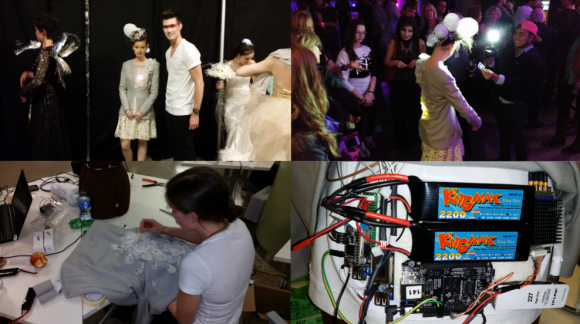
The [RADLab team] has created an eye-opening RFID jacket for Make Fashion 2014. For this project, [Dan Damron, Chris Zaal, and Ben Reed] of RADLab teamed up with designer [Laura Dempsey] to create a jacket which responded both to a dancer on the runway and the audience itself. RADLab stands for Radio Frequency Identification Application Development Lab, so you can probably guess that RFID was their weapon of choice for interaction. We’ve got a bit of RFID experience here at Hackaday, having recently used it at The Gathering in LA. The [RADLab team] didn’t skimp on processing power for this jacket. A BeagleBone Black running Debian controls the show. The BeagleBone receives data from a Thingmagic M6e 4 port UHF RFID Reader. The M6e is connected to 4 directional antennas. The BeagleBone responds differently depending on which RFID card is read, and which antenna reads it. With the data processed, the BeagleBone then issues commands to a teensy 3.0, which controls WS2811 “Neopixel” addressable RGB LEDs sewn into the jacket.
During the fashion show, the jacket wearer danced with a second model who had RFID tags sewn into his t-shirt. The LED clusters on the front, back and sleeves of the jacket would light up, and change color and flash frequency based upon which tag and antenna got a read. Once the performance was over, the audience was encouraged to pick up tags and interact with the jacket themselves. The software was still very much beta, so the [RADLab team] monitored everything via WiFi and restarted the software when necessary.
Continue reading “RFID Jacket Flashes The Crowd At Make Fashion 2014”

